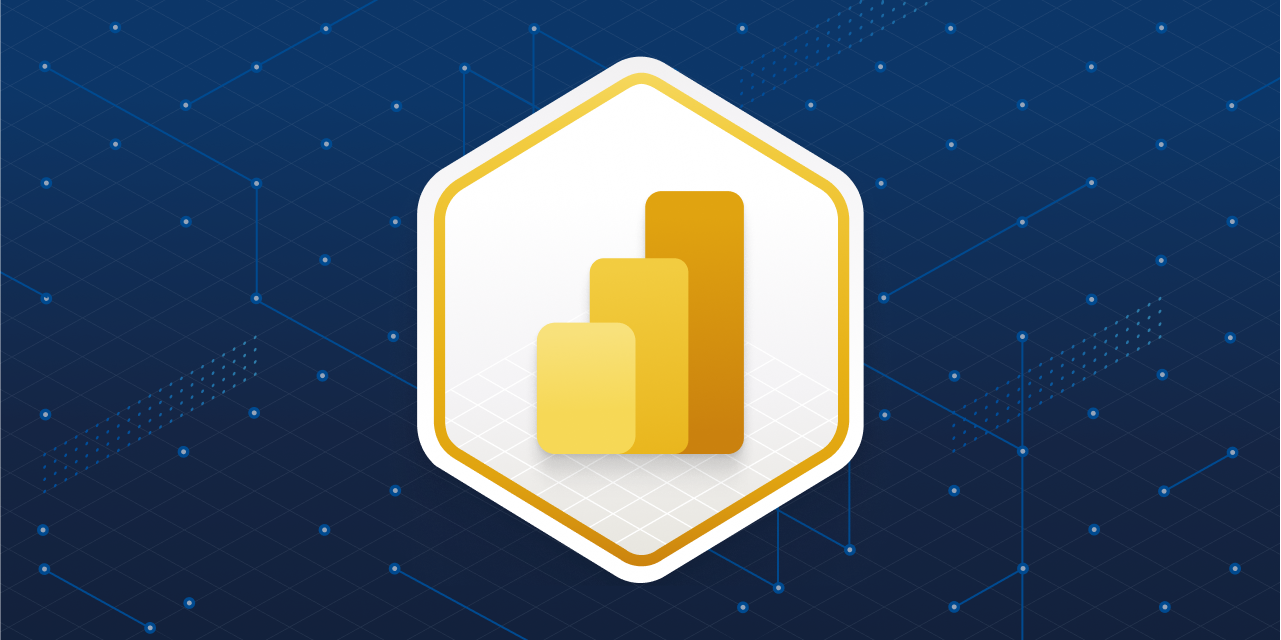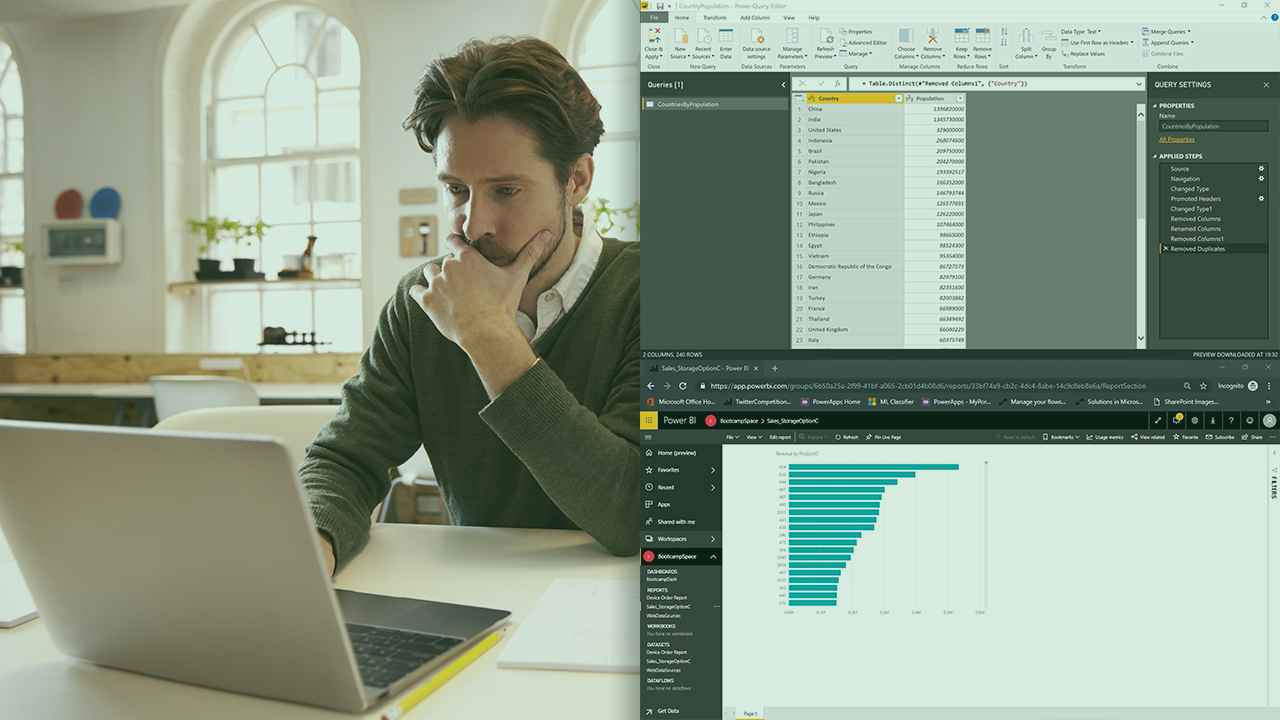Description
In this course, you will :
- Students will be able to work comfortably with the various tools in the Power BI universe and understand how they interact with one another.
- Students will have the knowledge needed to delve deeper into Power BI and learn more about its advanced features.
- Learn about the various tools in the Power BI universe and how to use them.
- Learn about Power BI Desktop and its components.
- Learn how to use the Query Editor to connect Power BI to various source types, as well as how to work on the Data Model and distinguish between the two steps.
- How to work in the different views of the Data Model
- How to create calculated columns and measures
- How to build relationships between different tables
- How to create a report with different interactive visualization types
- Learn how to use Power BI Service (= Power BI Pro) to create dashboards and to share and publish your results
- How to use Power BI Mobile to access your results from multiple devices.
- How to use typescript and the Power BI Developer Tools to create custom visuals.
- Students will be able to analyse data from various sources and create their own datasets by the end of this course.
Syllabus :
1. Introduction
- What is Power BI?
- Installing Power BI Desktop & Project Setup
- Connecting Power BI Desktop to Source Files
- Join our Online Learning Community
- Working in the Query Editor
- Understanding the Data Model & Creating Visuals
- Course Outline - What's Inside the Course?
- How To Get The Most Out Of This Course
- Useful Resources & Links
2. Introducing Power BI Desktop
- Using the Attached Project Files
- Understanding the Power BI Desktop Workflow
- Exploring the Interface of the Data Model
- Understanding the Query Editor Interface
- Important! Creating the Project File & Recommended Settings
- Course Slides 2020
- Useful Resources & Links
3. Working in the Query Editor
- Connecting Power BI Desktop to Source Files
- Keeping & Removing Rows
- Working with Filters
- Removing Empty Rows
- Saving the Project Draft
- Appending Queries
- Working with Columns
- Replacing Values
- Formatting Data & Handling Formatting Errors
- Pivoting & Unpivoting Data
- Splitting Columns
- Creating Groups & Cleaning Up our Project
- What we Achieved & How to Continue
- Theory Time: The Star Schema
- How we Use the Star Schema in our Project
- Query Duplicates vs References
- Creating the DIM-Region Table & Removing Duplicates
- Creating Tables Manually
- Theory Time: Merging Queries
- Understanding "Join Kind"
- Merging Queries Applied
- Finishing the DIM-Region Table
- The Next Steps
- Creating the DIM-Age Table
- Understanding "Extract"
- Working with Conditional Columns
- Creating the FACT-Table
- Understanding Basic Mathematical Operations
- Performance Optimization
- Useful Resources & Links
4. Understanding the Data Model: Data & Relationship View
- Understanding Relationships
- Cardinality: Many-to-One & One-to-One
- Cross Filter Direction & Many-to-Many
- Understanding Active Properties
- M-Language vs DAX (Data Analysis Expressions)
- M vs DAX - A Practical Example
- Understanding the DAX Basics
- The DAX Syntax
- Supported DAX Data Types
- Diving Into Operators
- DAX Functions - An Overview
- Understanding the CALENDAR Function
- Applying the DAX Basics
- Understanding IF & RELATED
- Calculated Columns vs Measures
- Creating our First Measures
- Understanding CALCULATE & FILTER
- Applying CALCULATE & FILTER in Measures
- Creating Measures with Measures
- Understanding "Data Category"
- Time to Practice - Data Model & Relationships
5. Creating Visuals in the Report View
- Understanding Basic Visual Concepts
- Getting Started with Visuals & Reports
- Creating our First Visuals
- Understanding Tooltips & Interactions
- Diving Intro Hierarchies & Drill Mode
- Data Colors & Conditional Formatting
- Formatting Report Pages
- Formatting Visuals
- Working with Report Themes
- Using the Slicer
- Understanding Default Summarization & Sorting
- Working with Treemaps & Tables
- Syncing Slicers
- Understanding Filter Types (Visual, Page & Report)
- Working with (Multi) Row Cards
- Creating Combined Visuals & Waterfalls
- Using Custom Visuals
6. Taking the Project to the Cloud with Power BI Pro (Service)
- Why we Need Power BI Pro (Service)
- Power BI: Service vs Pro vs Premium
- No Business Email? An Alternative
- Exploring the Power BI Pro Interface
- Understanding Workspaces
- Connecting Power BI Pro & Power BI Desktop
- Understanding Datasets in Power BI Pro
- Working with Reports
- Creating Dashboards
- Exploring "My Workspace"
- Refreshing Data with Gateways
- Sharing Data From "My Workspace"
- Understanding Collaboration Workspaces
- Workspaces vs Apps vs Content Packs
- Publishing an App
- Workspace or App - Which one Should I Choose?
- Working with Power BI Mobile
7. Other Data Sources
- Importing JSON Data
- Updated Star Wars API URL
- Importing Data from REST APIs
- Preparation: Setting up a MySQL Server
- Importing Data from a MySQL Server (and other SQL Servers)
8. How to Stay Up-to-Date in the Power BI World?
- Helpful Resources
- Using Preview Features
9. Creating Custom Visuals (Power BI for Developers)
- Why Custom Visuals?
- The Required Tools
- Setting Up & Installing the Required Tools
- Creating a New Visual
- Analyzing the Project & the Code
- Rendering Content to the Screen
- Using d3.js & a First Shape
- Getting Started with the Bars
- Rendering a Chart for Dummy Data
- Binding Real Data
- Coloring the Bars
- Adding an Axis
- Package & Wrap Up









